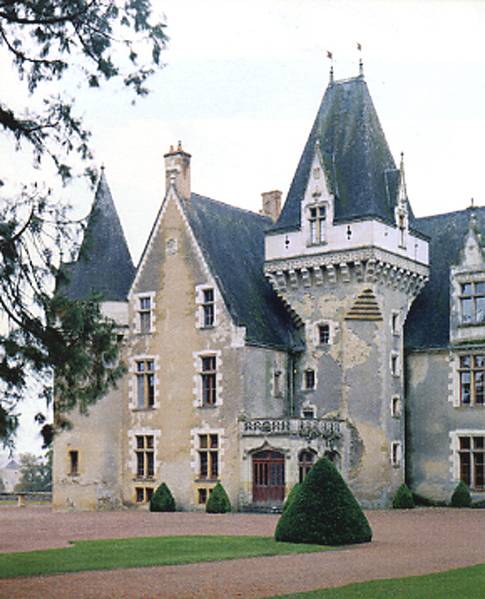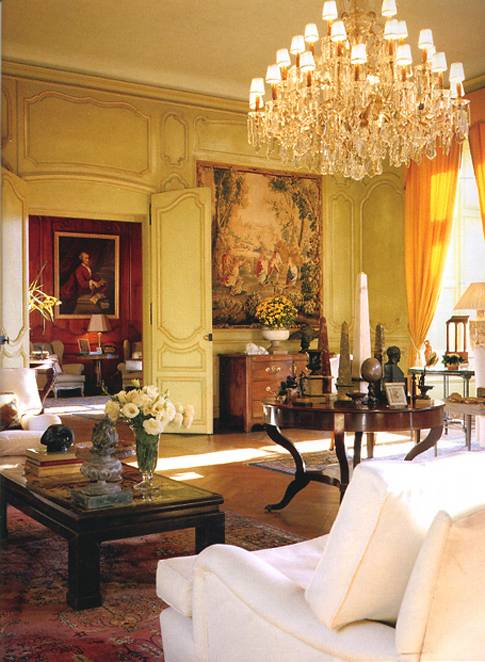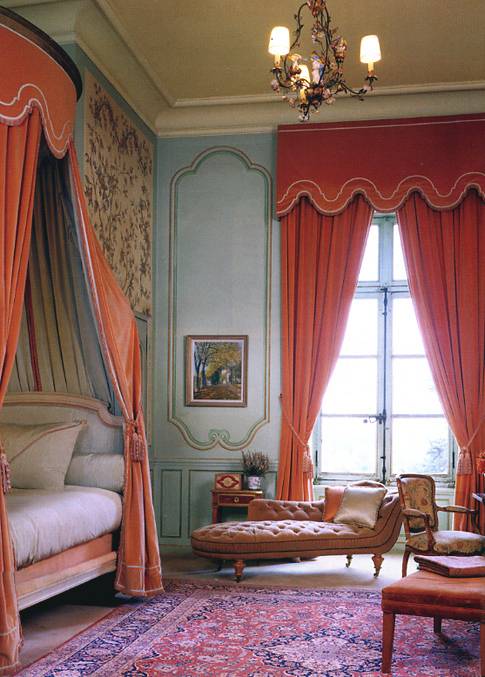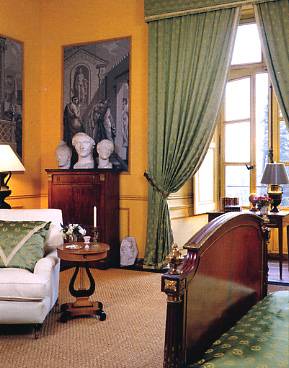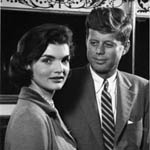 |  |  |
ABOVE Senator and Mrs. John F. Kennedy, Hyannisport, Massachusetts, 1955 | ABOVE John F. Kennedy, Hyannisport, Massachusetts, 1955 | ABOVE Senator John F. Kennedy, Foster Furcolo Parade, East Boston, 1956 |
|  |  |
| ABOVE Boston's Finest, 1957 | ABOVE John F. Kennedy at Newsstand, Boston, 1957 |
|
Country Auction
Characteristically, Reed decided to focus on the people attending this rural antiques auction rather than the event itself. In these images, he seems particularly concerned with the people's post-auction emotions. As the adrenaline of the sale subsides, does the reality of life with one's new treasures live up to the earlier anticipation? |
 | 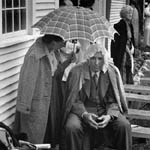 |  |
ABOVE Antique Purchase, Albany, Vermont, 1951 | ABOVE Keeping Dry, Albany, Vermont, 1951 | ABOVE Couple at Auction, Albany, Vermont, 1951 |
Rosenberg
In June 1953, Reed spent an afternoon photographing protesters in front of the Massachusetts State House in Boston. Ethel and Julius Rosenberg, who had been convicted in 1951 on espionage charges for passing secrets about nuclear weapons to the Soviet Union, were scheduled to be executed on June 19, 1953. The emotionally charged conflict spilled into the streets, where supporters of clemency clashed with those who favored the death penalty. A writer for Life magazine was trying to cover the story without the aid of a photographer. Seeing Reed, the reporter asked if he would be willing to cover the protests for him. Reed's acceptance marked the beginning of his six-year career as a photojournalist for Life. |
 | 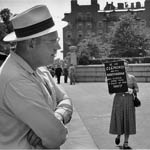 | 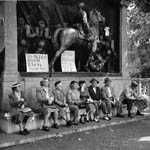 |
ABOVE Rosenberg Vigil I, Boston, 1953 | ABOVE Rosenberg Vigil II, Boston, 1953 | ABOVE Rosenberg Vigil III, Boston, 1953 |
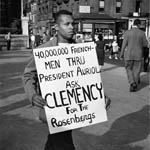 | | |
ABOVE Rosenberg Vigil IV, Boston, 1953 | | |
Muskie
Edmund S. Muskie started politics with a successful 1946 run for a seat in the Maine House of Representatives, where he served three consecutive terms. Here, Reed shows Muskie in his hometown on the day of the 1954 Maine gubernatorial election. Reed's pictures cover the story from the tension while the results were still coming in to the elation after they revealed Muskie had won. Like Kennedy, Muskie went on to a dramatic political career, becoming the first Democrat in Maine's history to be elected U.S. senator. He ran for president in 1968 and 1972, and finished his political career as Secretary of State in 1980-1981. |
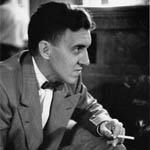 |  |
ABOVE Edmund S. Muskie,
Rumford, Maine, 1954 | ABOVE Edmund S. Muskie, with Daughter
Rumford, Maine, 1954 |
Tasha Tudor
This Life photo-essay, "A Wedding in a Land of Dolls," described the fanciful wedding of dolls at the home of children's book author Tasha Tudor. Tudor famously eschewed the trappings of modern living and created instead a carefully constructed world based on nostalgia for pre-modern America. Reed took advantage of his time at Tudor's house to capture not only the wedding, his assigned subject, but a bit of this remarkable family's way of life. |
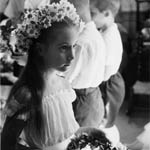 | 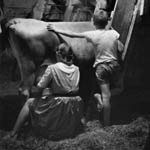 |
ABOVE Girl with Wreath, Webster,
New Hampshire, 1955 | ABOVE Evening Chores, Webster,
New Hampshire, 1955 |
|
A Changing World: New England in the Photographs of Verner Reed, 1950-1972
Organized by Historic New England, Boston, Massachusetts
All photographs are drawn from the collections of Historic New England, presented by the Society for the Preservation of New England Antiquities. They are part of the Verner Reed Archive, a collection of more than 26,000 negatives and prints, which was donated by Verner and Deborah Reed.
John R. Stomberg served as guest curator of the original exhibition.
